Extrafoveal photostress recovery test in glaucoma and idiopathic central serous chorioretinopathy
- PMID: 9893589
- PMCID: PMC1722751
- DOI: 10.1136/bjo.82.9.1007
Extrafoveal photostress recovery test in glaucoma and idiopathic central serous chorioretinopathy
Abstract
Background/aims: A photostress recovery test was designed to differentiate macular diseases from optic nerve disorders, but recently an abnormal recovery time was reported in glaucoma. The purpose of this study was to search for the difference in abnormality of the photostress recovery test between glaucoma and idiopathic central serous chorioretinopathy (ICSC).
Methods: This study involved 21 normal subjects, 14 patients, with ICSC and 10 patients with primary open angle glaucoma (POAG). A scanning laser ophthalmoscope (SLO) was used with microperimetry for bleaching the test point and measuring the recovery of sensitivity. Photostress recovery time (SLO-PSRT) could be measured at extrafoveal points outside and inside the affected area. The initial sensitivity change and the time constant of recovery after bleaching were calculated by fitting an exponential equation to the data.
Results: In normal subjects, neither the initial sensitivity change nor the time constant were correlated with the location of the test point. In 14 patients with ICSC, the initial sensitivity change in the detached area was significantly smaller than that in the unaffected area which was not significantly different from that in the age matched normal subjects. The time constant in the detached area was significantly longer than that in the unaffected area, which was not significantly different from that in the normal subjects. In 10 patients with POAG, the initial sensitivity change inside and outside the scotoma was not significantly different from that of age matched normal subjects. The time constant inside the scotoma was significantly longer than that outside the scotoma, which was not significantly different from that of the age matched normal subjects.
Conclusion: Both ICSC and POAG showed a prolonged time constant of recovery, but the initial sensitivity change was reduced only in ICSC. The difference in our results between ICSC and POAG may be caused by the difference of the retinal pathology. Further, the SLO-PSRT is very useful when the lesion is located outside the fovea.
Figures
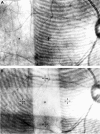
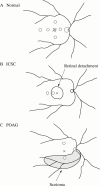

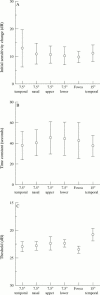
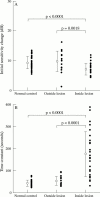
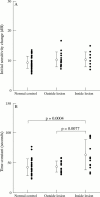
Similar articles
-
Extrafoveal photostress recovery testing with a scanning laser ophthalmoscope.Jpn J Ophthalmol. 1997 Jul-Aug;41(4):255-9. doi: 10.1016/s0021-5155(97)00044-0. Jpn J Ophthalmol. 1997. PMID: 9304441
-
Sources of variability in the clinical photostress test.Ophthalmic Physiol Opt. 2002 Jan;22(1):61-7. doi: 10.1046/j.1475-1313.2002.00005.x. Ophthalmic Physiol Opt. 2002. PMID: 11824648
-
Five to 15 year follow-up of resolved idiopathic central serous chorioretinopathy.Eye (Lond). 2004 Mar;18(3):262-8. doi: 10.1038/sj.eye.6700637. Eye (Lond). 2004. PMID: 15004575
-
[New examination methods for macular disorders--application of diagnosis and treatment].Nippon Ganka Gakkai Zasshi. 2000 Dec;104(12):899-942. Nippon Ganka Gakkai Zasshi. 2000. PMID: 11193944 Review. Japanese.
-
[A challenge to primary open-angle glaucoma including normal-pressure. Clinical problems and their scientific solution].Nippon Ganka Gakkai Zasshi. 2012 Mar;116(3):233-67; discussion 268. Nippon Ganka Gakkai Zasshi. 2012. PMID: 22568103 Review. Japanese.
Cited by
-
Why HID headlights bother older drivers.Br J Ophthalmol. 2003 Jan;87(1):113-7. doi: 10.1136/bjo.87.1.113. Br J Ophthalmol. 2003. PMID: 12488274 Free PMC article. Review.
-
[Flicker provocation with LED full-field stimulation in normals and glaucoma patients].Ophthalmologe. 2006 Oct;103(10):866-72. doi: 10.1007/s00347-006-1389-5. Ophthalmologe. 2006. PMID: 16830139 Clinical Trial. German.
-
Slow Cone Reflectance Changes during Bleaching Determined by Adaptive Optics Scanning Laser Ophthalmoscope in Living Human Eyes.PLoS One. 2015 Jun 29;10(6):e0131485. doi: 10.1371/journal.pone.0131485. eCollection 2015. PLoS One. 2015. PMID: 26121666 Free PMC article.
-
Design of a novel smartphone-based photostress recovery time test for detecting abnormalities in the macula. A cross-sectional study.Ann Med Surg (Lond). 2022 Apr 29;77:103699. doi: 10.1016/j.amsu.2022.103699. eCollection 2022 May. Ann Med Surg (Lond). 2022. PMID: 35638075 Free PMC article.
References
Publication types
MeSH terms
Substances
LinkOut - more resources
Full Text Sources
Medical
